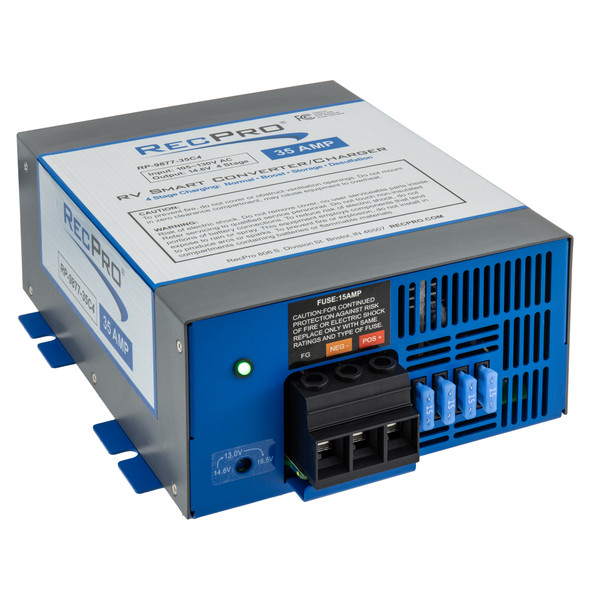RV Converters

Power; it’s what drives the RV community. Even if you’re out on the road, heading to a boondocking location, you’ll probably be using electricity at some point in your journey. While most appliances will work by just plugging it into the wall, many others require special equipment to operate. Even RecPro’s luxury power recliner line comes with special power cords to plug into the wall. To help our customers live the best RV lifestyle they can, we’ve added a range of converters to our inventory. Now, you’ll be able to hook up a wide variety of items in your RV without worrying about power drop-off or overloading your motors!
RV Electrical | Circuit Breakers | Inverters | Dimmer Switches | Extension Cords | Motors | Generators | Connectors | Plugs | Power Inlets | Power Sockets | Switches | Trailer Wiring
-


RV Converter 35 Amp, 120V AC to 12V DC with 4 Stage Smart Charging
RecPro®
$129.95SKU: RP-9877-35C4$129.95 -


RV Converter 45 Amp, 120V AC to 12V DC with 4 Stage Smart Charging
RecPro®
$139.95SKU: RP-9878-45C4$139.95 -


RV Converter 55 Amp, 120V AC to 12V DC with 4 Stage Smart Charging
RecPro®
$144.95SKU: RP-9879-55C4$144.95 -


RV Converter 65 Amp, 110V AC to 12V DC with 4 Stage Smart Charging
RecPro®
$164.95SKU: RP-9881-65C4$164.95 -


RV Converter 75 Amp, 120V AC to 12V DC with 4 Stage Smart Charging
RecPro®
$179.95SKU: RP-9882-75C4$179.95 -


RV Converter 85 Amp, 110V AC to 12V DC with 4 Stage Smart Charging
RecPro®
$189.95SKU: RP-9883-85C4$189.95 -


RV Converter 100 Amp, 120V AC to 12V DC with 4 Stage Smart Charging
RecPro®
$199.95SKU: RP-9884-100C4$199.95 -


RV Converter 125 Amp, 110V AC to 12V DC with 4 Stage Smart Charging
RecPro®
$209.95SKU: RP-9885-125C4$209.95 -

 $64.95
$64.95 -
Out of stock

 $209.95
$209.95 -


-


-

 $8.95
$8.95 -
 $51.95
$51.95

Power; it’s what drives the RV community. Even if you’re out on the road, heading to a boondocking location, you’ll probably be using electricity at some point in your journey. While most appliances will work by just plugging it into the wall, many others require special equipment to operate. Even RecPro’s luxury power recliner line comes with special power cords to plug into the wall. To help our customers live the best RV lifestyle they can, we’ve added a range of converters to our inventory. Now, you’ll be able to hook up a wide variety of items in your RV without worrying about power drop-off or overloading your motors!
RV Electrical | Circuit Breakers | Inverters | Dimmer Switches | Extension Cords | Motors | Generators | Connectors | Plugs | Power Inlets | Power Sockets | Switches | Trailer Wiring
